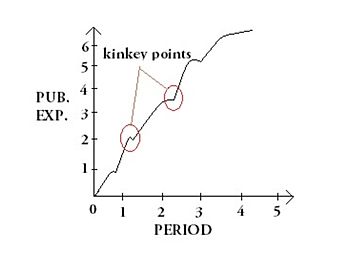Wagner's law
It predicts that the development of an industrial economy will be accompanied by an increased share of public expenditure in gross national product: The advent of modern industrial society will result in increasing political pressure for social progress and increased allowance for social consideration by industry.Wagner's law suggests that welfare states evolves from free-market capitalism because the population votes for ever-increasing social services as income grows.
In spite of some ambiguity, Wagner's statement in formal terms has been interpreted by Richard Musgrave as follows: As progressive nations industrialize, the share of the public sector in the national economy grows continually.
Wagner himself identified these as (i) social activities of the state, (ii) administrative and protective actions, and (iii) welfare functions.
[1][3] A 1961 study by the British economists Alan T. Peacock and Jack Wiseman found that Wagner's Law aptly described public expenditure in the United Kingdom in the period between 1891 and 1955.
[6] They further stated: Other studies have likewise found a strong relationship between public expenditure and per-capita gross domestic product.
